Pressure cookers are incredible tools for fast and nutritious cooking, but like any appliance, they must be used properly to avoid issues. One of the most common problems users face is overheating. This not only affects your food but can also damage the cooker and pose safety risks. Fortunately, with the right practices and equipment, overheating is easy to prevent.
Table of Contents
What Does Overheating Mean in a Pressure Cooker?
Overheating typically occurs when:
-
There isn’t enough liquid inside.
-
The cooker is operated on high heat for too long.
-
The pressure cooker is left unattended during use.
-
The pressure release valve is clogged.
-
The gasket or sealing ring is worn out or not functioning properly.
When a pressure cooker overheats, food can burn, the base may warp, and pressure levels may become unstable — all of which affect both performance and safety.
Tips to Prevent Overheating in a Pressure Cooker
1. Use the Correct Amount of Liquid
Liquid is essential for generating steam and pressure. Not enough liquid leads to the cooker running dry and overheating.
-
Generally, you should add at least 1 cup of water or other liquid unless your cooker’s manual says otherwise.
-
Hearty or dense foods like beans or meats may require more liquid.
2. Don’t Overfill the Cooker
Too much food or liquid can block valves and disrupt pressure regulation.
-
Stick to the manufacturer’s guidelines: typically no more than two-thirds full, or half full for foamy or expanding foods like dal or rice.
3. Adjust the Heat as Needed
Start with high heat to build pressure, but once pressure is achieved, reduce the heat to low or medium to maintain it.
-
Using a tri-ply stainless steel pressure cooker like the Meyer Presta helps. Its even heat distribution prevents hot spots that commonly cause overheating or food burning.
4. Clean the Vent Pipe and Valves Regularly
Clogged vents or valves can prevent proper pressure release and result in overheating.
-
After each use, clean the valve and vent with a brush or pin to remove any stuck food or residue.
-
Ensure they are dry and free of blockage before the next use.
5. Check the Gasket (Sealing Ring)
A damaged or old gasket may allow steam to leak and prevent proper pressure build-up, causing the cooker to overheat.
-
Replace your gasket every 12–18 months or sooner if you see cracks or stiffness.
-
Clean and dry the gasket before storing the cooker.
6. Choose a Well-Constructed Pressure Cooker
A high-quality pressure cooker reduces the risk of overheating through better materials and built-in safety mechanisms.
The Meyer Presta Tri-Ply Stainless Steel Pressure Cooker is an excellent example:
-
Its tri-ply body ensures even heat distribution and prevents scorching.
-
Available in 2L, 3L, and 5.5L sizes to suit different needs.
-
Features a safe, secure lid-locking system and a smart pressure-regulation mechanism.
-
The ergonomically designed stay-cool handle offers comfort and added safety during use.
-
Stainless steel construction resists warping and performs consistently over time.
7. Be Present During the Cooking Process
Especially during pressure build-up, always stay nearby. Adjust the heat as soon as pressure is reached to avoid drying out the liquid.
MEYER Presta 5.5L Tri-ply with Outer Lid Pressure Cooker
Signs That Your Pressure Cooker Is Overheating
Watch out for the following:
-
A burning smell
-
Darkening or warping at the base
-
Food stuck or burnt at the bottom
-
Unusual whistling or steam release patterns
-
Cooker shutting off too early (for electric models)
-
No liquid left inside after opening
If you observe any of these signs, turn off the heat immediately, release pressure safely, and inspect the cooker before reusing.
Conclusion
Overheating in a pressure cooker is preventable with attention, routine maintenance, and high-quality tools. Always use enough liquid, clean your pressure release systems, and choose a dependable pressure cooker like the Meyer Presta, which is designed to combine safety, performance, and durability in one sleek package.
Following these simple tips can lead to stress-free, delicious meals and long-term appliance care.


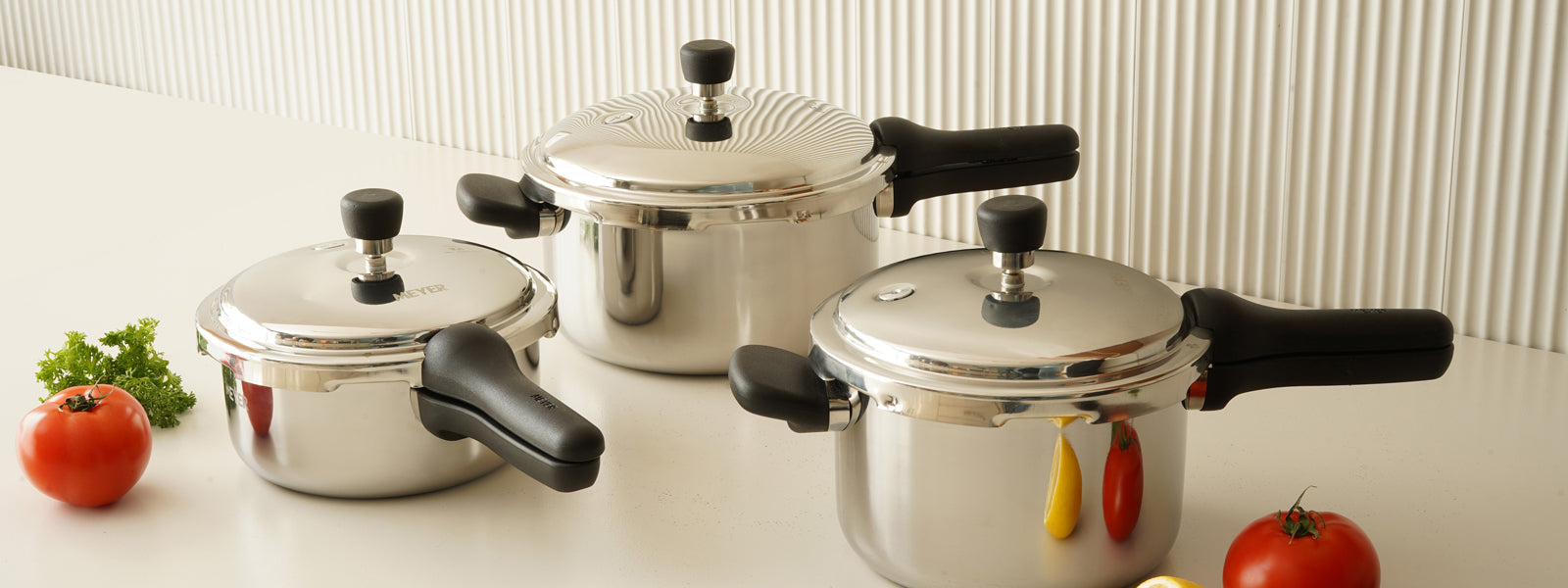
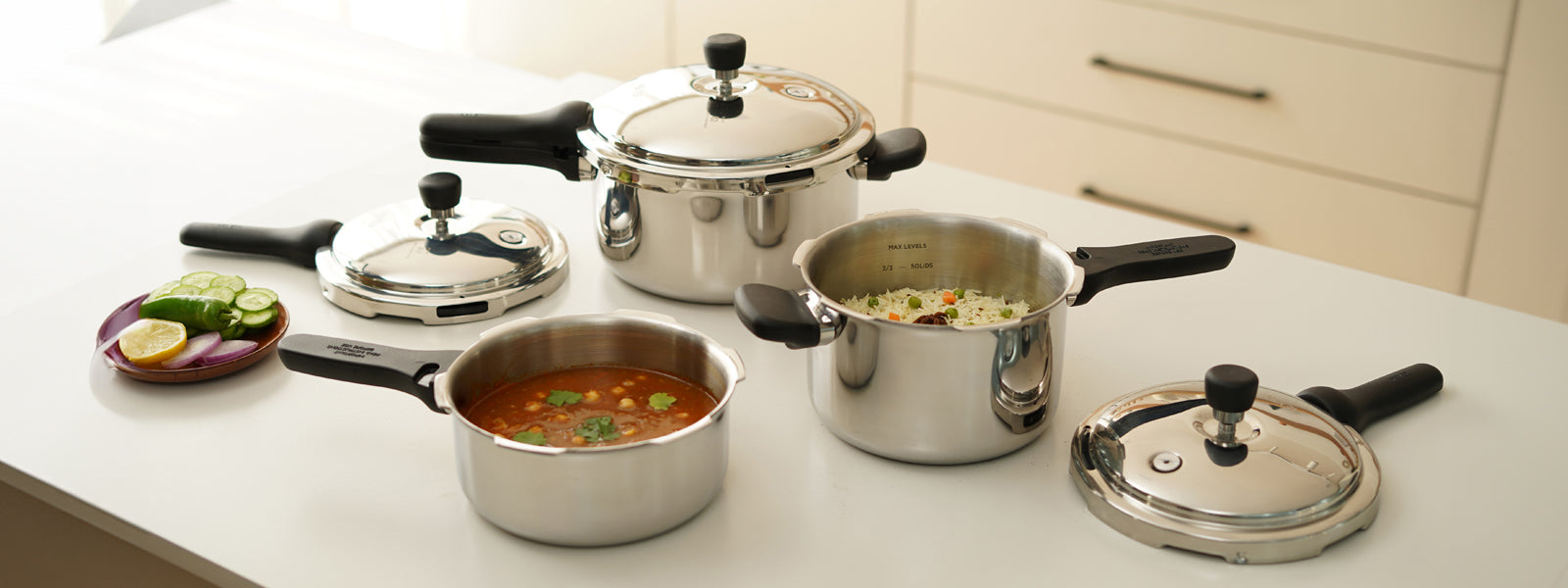
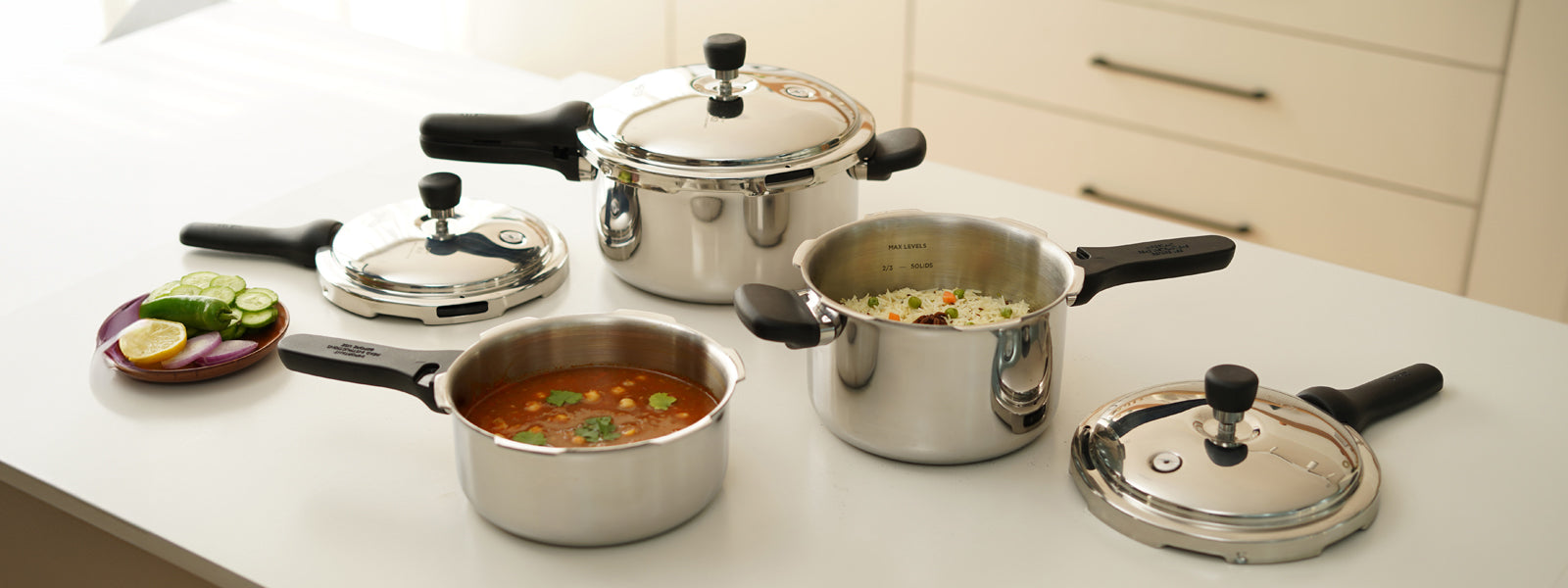
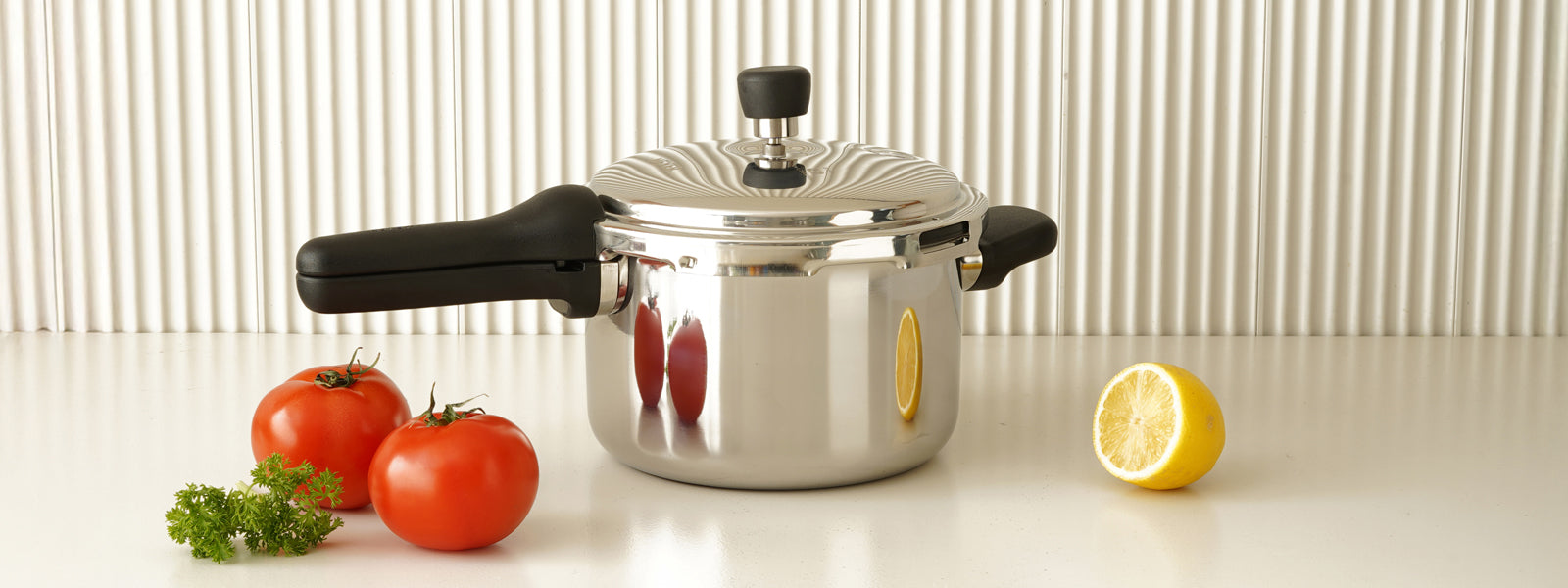
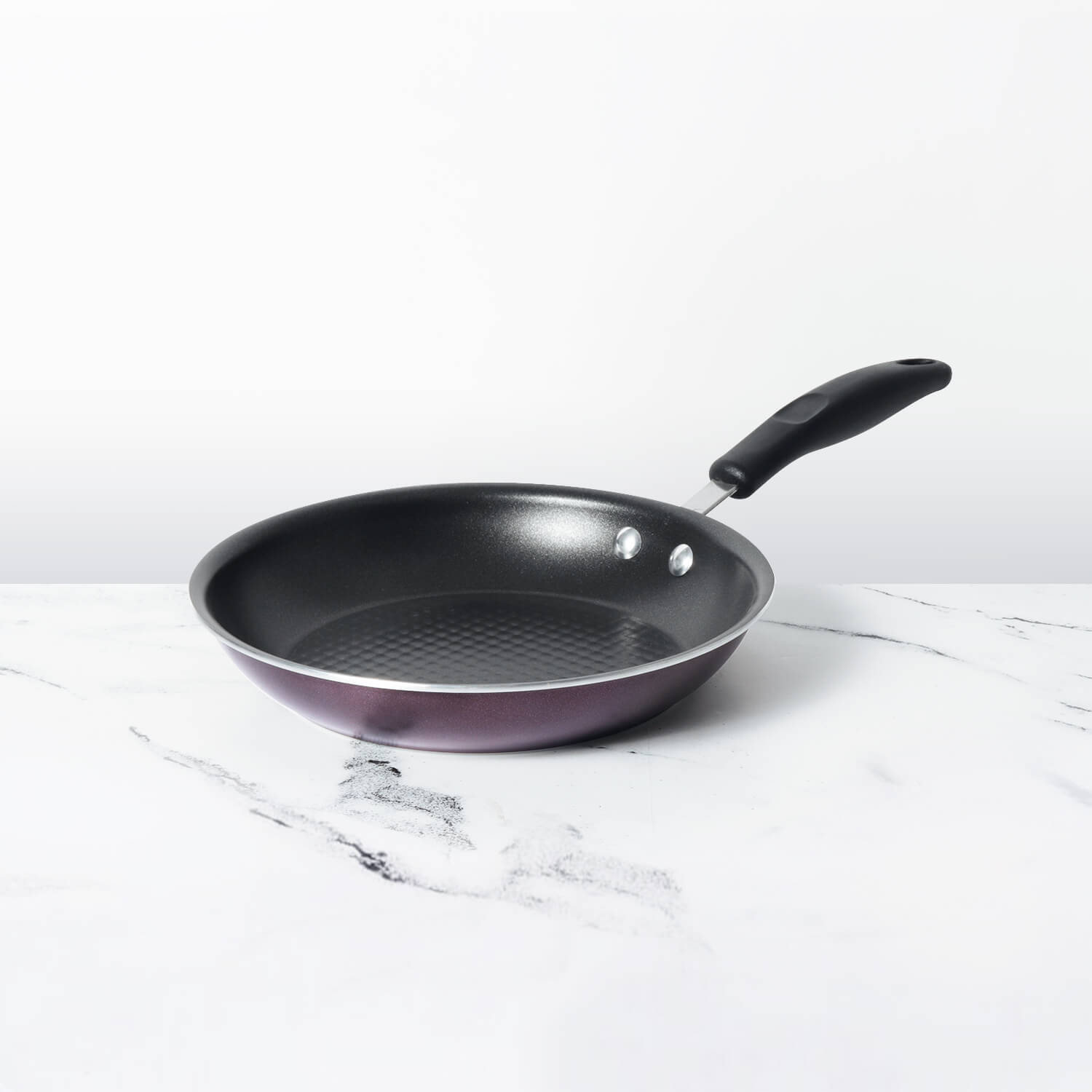
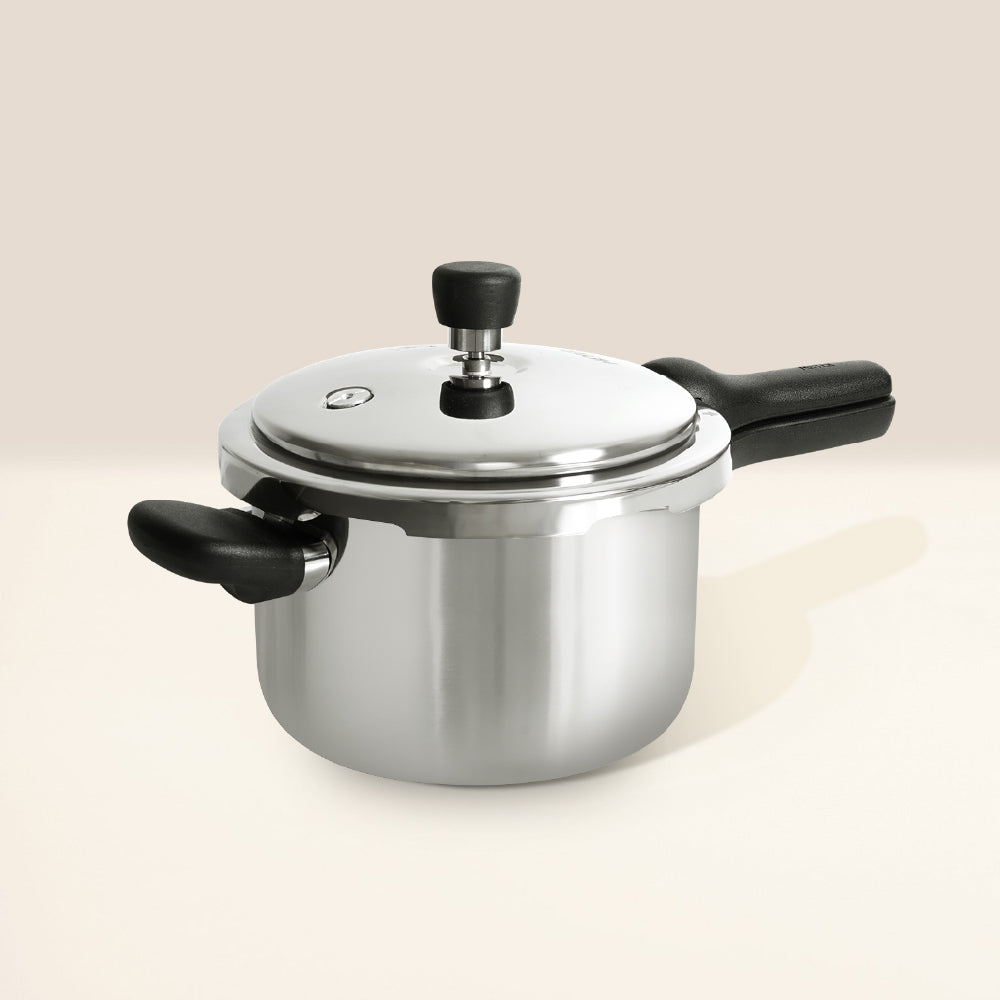




Leave a comment